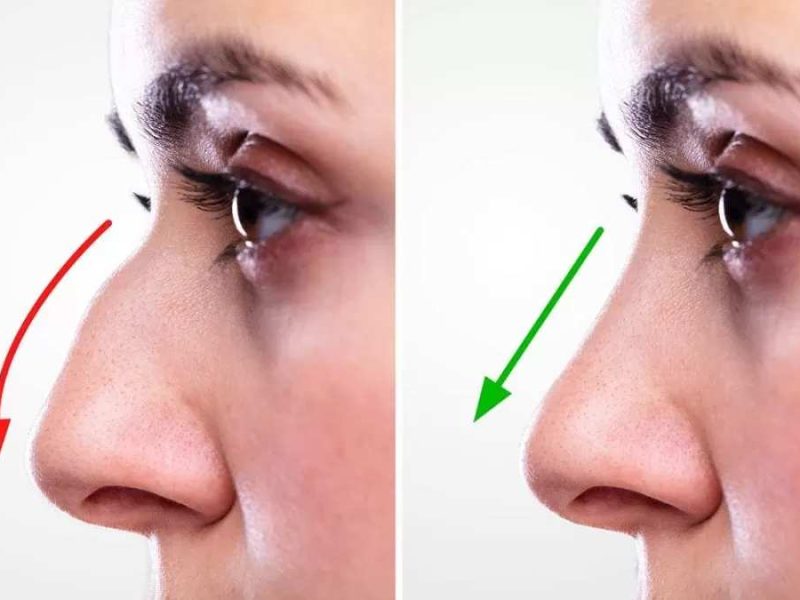Teeth lengthening also known as crown lengthening is a specialized dental operation aiming at exposing more of the natural tooth surface by removing or modifying extra gum tissue, bone, or both. Although it is usually done for cosmetic improvement, restorative dentistry depends much on it. Dentists can better support crowns, bridges, or fillings by adjusting the gum and bone levels around a tooth especially in cases of a tooth that is decaying, damaged along the gum line, or lacks enough structural integrity for a restoration.
For those with a gummy smile, where too much gum tissue makes the teeth seem small or uneven, teeth lengthening is a popular aesthetic fix. By exposing more of the tooth’s crown, the operation reveals more of the symmetry and balance required for a smile. Based on the patient’s need, the treatment can be carried out on one or several teeth. Depending on the degree of complexity, it can call for the removal of bone tissue for functional adjustments or soft tissue reshaping gingivectomy. One safe and efficient approach to get both better dental health and a more appealing smile is teeth lengthening.
People select this operation mostly for two reasons:
- Cosmetic enhancement towards a more proportionate smile.
- Restoring need when dental crowns, fillings, or veneers call for increased tooth structural integrity.
Types of Teeth Lengthening Procedures
Gingivectomy (Gum Contouring)
- It just trims the soft gum tissue.
- Perfect for correcting a gummy smile or uneven gum lines.
- Usually performed with a laser or scalpel.
Crown Lengthening Surgery
- Involves Gum tissue and underlying bone removal.
- Essential when a teeth breaks near the bone or when there is deterioration below the gum line.
- More intrusive and takes long time for healing.
Who Should Consider Teeth Lengthening?
You might be a strong candidate:
- If you’re uncomfortable with a gummy grin or short-looking teeth,
- You are ready for bridges or crowns.
- You have broken teeth right around the gum line.
- You want a more symmetrical grin.
Important: Without past treatment, applicants with advanced gum disease, poor dental hygiene, or underlying medical issues could not be appropriate.
Benefits of Teeth Lengthening
- Improves smile aesthetics; by lowering deep gum pockets,
- Improves oral health.
- Gets teeth ready for restorative work including fillings or crowns.
- Boosts self-confidence by means of better appearance;
- Permanent outcomes devoid of continuous adjustments.
See More Health Articles
Can I Brush My Teeth After Wisdom Teeth Removal? Brushing Tips
Wide Nose: Causes, Treatments & Styling Tips
Crown Lengthening for Crowns: Procedure & Benefits
Carpenter Ant Bite: Symptoms, Treatment & Prevention
Apples and Bananas Strain: Flavor, Effects & Growing Guide
Procedure Overview
What to Expect:
- Consultation & X-rays – To assess bone and gum health.
- Local Anesthesia – Numbs the area for a pain-free experience.
- Gum or Bone Removal – Tissue is trimmed and shaped.
- Cleaning & Stitching – Site is cleaned and sutured.
- Post-op Instructions – Given to ensure proper healing.
Recovery Time:
- Minor procedures: 7–10 days
- Surgical crown lengthening: 2–4 weeks
- Full healing for final results: 2–3 months
Cost of Teeth Lengthening in 2025
The cost of teeth lengthening depends on multiple factors:
|
Procedure Type |
Estimated Cost Per Tooth |
Insurance Coverage |
|
Gingivectomy |
$150 – $400 |
Typically not covered |
|
Crown Lengthening Surgery |
$1,000 – $3,000 |
May be partially covered |
Key Cost Factors:
- Number of teeth treated
- Whether bone removal is required
- Dentist’s expertise and location
- Anesthesia and follow-up care
Tip: Ask your dentist for a written estimate, and check with your dental insurance provider about coverage eligibility.
Aftercare and Recovery Tips
- Use a soft-bristle toothbrush.
- Avoid spicy, crunchy, or hot foods for a few days.
- Take prescribed antibiotics or painkillers as instructed.
- Use cold compresses to reduce swelling.
- Keep the area clean with saltwater rinses.
- Avoid smoking to speed up healing.
Alternatives to Teeth Lengthening
While teeth lengthening is effective, you might consider other cosmetic options based on your goals and budget.
|
Alternative |
Use Case |
Pros |
Cons |
|
Dental Veneers |
Covers short/chipped teeth |
Quick, aesthetic improvement |
Expensive, irreversible |
|
Laser Gum Reshaping |
Mild to moderate gummy smile correction |
Minimally invasive, fast healing |
Limited bone access, cosmetic only |
|
Orthodontics (Braces/Invisalign) |
Adjusts tooth/gum alignment |
Treats bite and alignment issues |
Long treatment duration |
|
Gum Depigmentation |
Improves appearance of dark or patchy gums |
Cosmetic, non-invasive |
Not useful for tooth lengthening |
Teeth Lengthening vs. Veneers: Which One Is Better?
Choose Teeth Lengthening if:
- You need more tooth exposed for a crown or filling.
- To fix a gummy smile caused by excess gum tissue.
- You want permanent results with your natural teeth.
Choose Veneers if:
- You want to change tooth shape, color, or size.
- Your gums are already in a good position.
- You’re okay with minor enamel removal.
Finding a Trusted Cosmetic Dentist
To get the best results:
- Look for certifications from the American Academy of Cosmetic Dentistry (AACD)
- Read verified reviews and testimonials
- Ask for before-and-after photos
- Ensure they use modern technology (e.g., laser contouring)
Teeth lengthening is widely regarded as a safe, effective, and long-lasting dental procedure that can significantly enhance the appearance and function of your smile. Whether you’re dealing with a gummy smile, uneven gum lines, or require additional tooth exposure for a dental crown or filling, this procedure offers a tailored solution to meet your specific needs.
For those focused on aesthetics, teeth lengthening can reveal more of your natural tooth structure, creating a more balanced and attractive smile. It’s an ideal option for people who feel their teeth appear too short or who experience low self-confidence when smiling. On the functional side, this procedure can be essential when restorative work is needed such as placing a crown on a tooth that’s broken below the gum line or decayed close to the bone.
The results are not only immediate but also permanent, offering a significant return on investment in both appearance and oral health. With proper care and guidance from a qualified dentist or periodontist, teeth lengthening can be a transformative experience giving you a confident, healthier smile for years to come.
Frequently Asked Questions
Does the procedure of teeth lengthening hurt?
No, local anesthesia prevents pain. You may feel mild discomfort during recovery.
Will teeth lengthening change the shape of my face?
No, but it may improve your smile line and facial balance slightly.
Can I whiten my teeth after the procedure?
Yes, but wait 2–3 weeks post-surgery or as advised by your dentist.
Are the results permanent?
Yes, gum tissue and bone do not regrow significantly after removal.
Can I combine teeth lengthening with other procedures?
Absolutely. Many patients combine teeth lengthening with veneers or whitening for a full smile makeover.






